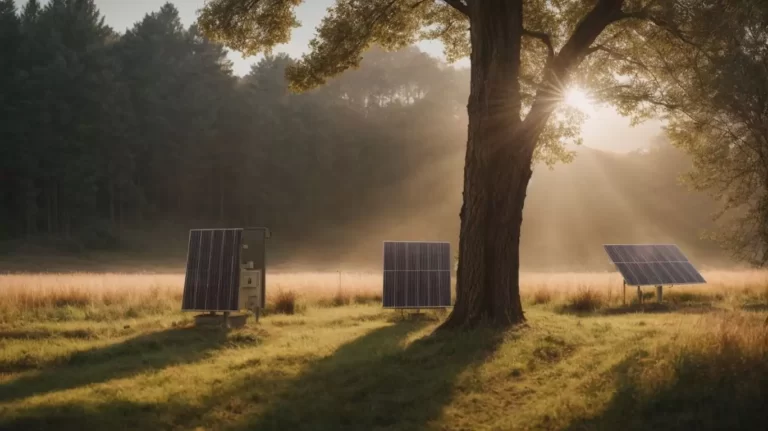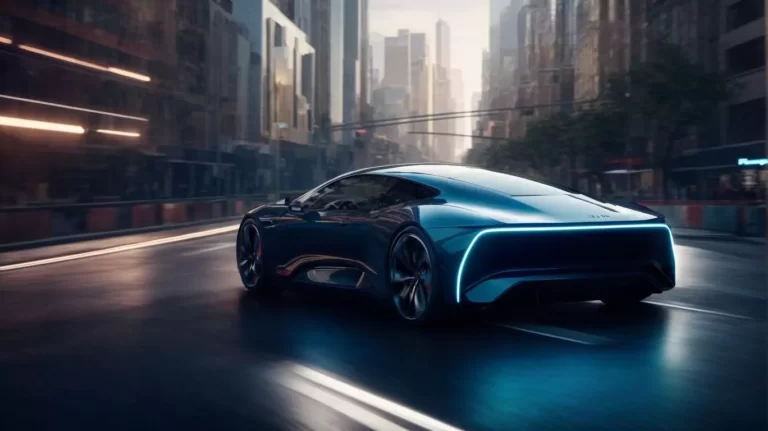Save Money and the Environment with Energy-Efficient Appliances

Are you tired of high energy bills and worried about your impact on the environment? Look no further! In this article, we will explore the importance of energy-efficient appliances and how they can help you save money while reducing your carbon footprint. Don’t let your concern for the planet and your wallet go unheard. Start making a change now.
What Are Energy-Efficient Appliances?
Energy-efficient appliances are specifically designed to minimize energy consumption while still providing the desired functionality. These appliances are carefully engineered to use less electricity, gas, or water compared to their conventional counterparts, resulting in lower energy bills and reduced carbon footprints.
These appliances achieve higher levels of energy efficiency through the use of various technologies and features. For example, refrigerators and air conditioners with improved insulation and compressor designs consume less energy. LED light bulbs are also a great energy-saving option, using significantly less electricity than traditional incandescent bulbs.
To help consumers identify energy-efficient appliances, the Environmental Protection Agency has set energy efficiency standards and provides Energy Star ratings for qualifying products.
By choosing energy-efficient appliances, consumers can not only enjoy long-term cost savings, but also contribute to environmental sustainability by reducing greenhouse gas emissions. In addition, some governments offer incentives and rebates to promote the use of energy-efficient appliances.
Pro-tip: When purchasing appliances, be sure to look for the Energy Star label and compare the energy consumption of different models to make informed decisions about energy efficiency.
How Do Energy-Efficient Appliances Work?
Energy-efficient appliances function by utilizing advanced technologies and design features that minimize energy consumption while maintaining optimal performance. The following are the key steps involved in the operation of energy-efficient appliances:
- Improved insulation: Energy-efficient appliances are equipped with better insulation, which reduces heat transfer and energy loss.
- Efficient heating and cooling mechanisms: These appliances utilize advanced heating and cooling technologies, such as heat pumps or variable speed compressors, to minimize energy wastage.
- Smart sensors and controls: Energy-efficient appliances are equipped with sensors and controls that optimize energy usage based on real-time conditions, such as occupancy or ambient temperature.
- Energy-efficient components: These appliances use components, such as energy-saving motors or LED lights, that consume less power compared to traditional counterparts.
- Advanced power management: Energy-efficient appliances implement power management features that automatically adjust power usage based on load requirements, reducing energy consumption during low-demand periods.
By incorporating these steps, energy-efficient appliances significantly reduce energy consumption, resulting in lower utility bills and a reduced carbon footprint.
What Are the Benefits of Using Energy-Efficient Appliances?
Are you looking to save money and reduce your environmental impact? Energy-efficient appliances may be the answer you’re looking for. In this section, we will discuss the various benefits of using energy-efficient appliances in your home. From lower energy bills to a reduced carbon footprint, we’ll cover it all. Additionally, we’ll explore how these appliances have a longer lifespan and can even provide better performance than traditional ones. Keep reading to learn more about the advantages of energy-efficient appliances.
1. Lower Energy Bills
Energy-efficient appliances are a great way to decrease energy costs and lessen your impact on the environment. Here are some steps to help you achieve lower energy bills:
- Choose appliances with high energy efficiency ratings, such as Energy Star certified appliances. These appliances meet strict energy efficiency guidelines set by the Environmental Protection Agency.
- Switch to LED light bulbs, which are more energy-efficient and have a longer lifespan compared to traditional incandescent bulbs.
- Install a smart thermostat to better control and optimize your heating and cooling settings, reducing energy waste.
- Invest in energy-efficient refrigerators, which consume less energy and help preserve food for longer periods.
By following these steps, you can significantly decrease your energy bills and contribute to a greener environment.
2. Reduced Carbon Footprint
Reducing your carbon footprint is a crucial step in mitigating climate change and preserving the environment. One effective way to achieve this is by using energy-efficient appliances. Here are some ways to reduce your carbon footprint with the help of energy-efficient appliances:
- Choose Energy Star certified appliances: Energy Star appliances meet strict energy efficiency standards set by the Environmental Protection Agency. They consume less energy and emit fewer greenhouse gas emissions.
- Opt for LED light bulbs: LED bulbs use significantly less energy and have a longer lifespan compared to traditional incandescent bulbs. They also produce less heat, reducing the need for air conditioning.
- Install smart thermostats: Smart thermostats allow you to control and optimize your home’s heating and cooling systems, minimizing energy waste and carbon emissions.
- Invest in energy-efficient refrigerators: Refrigerators with high energy efficiency ratings consume less electricity, resulting in lower carbon dioxide emissions.
By implementing these steps and utilizing energy-efficient appliances in your household, you can make a significant contribution to reducing your carbon footprint and protecting the planet.
3. Longer Lifespan
When it comes to energy-efficient appliances, one of the main advantages is their longer lifespan. By following these steps, you can maximize the lifespan of your energy-efficient appliances:
- Read the manufacturer’s manual and follow the recommended maintenance instructions.
- Regularly clean and replace filters to ensure optimal performance.
- Avoid overloading the appliances as this can strain the components and lead to premature wear and tear.
- Keep the appliances in a cool and well-ventilated area to prevent overheating.
- Use the appliances according to their intended purpose and avoid using them for tasks they are not designed for.
Following these steps will not only help prolong the lifespan of your energy-efficient appliances but also ensure that they continue to perform at their best. This will also save you money in the long run by reducing the need for repairs or replacements.
Remember, investing in energy-efficient appliances not only benefits the environment but also provides you with durable and reliable appliances that will serve you for years to come.
4. Better Performance
When it comes to energy-efficient appliances, better performance is one of the key benefits. These appliances are designed to operate more efficiently, resulting in improved functionality and effectiveness. Here are some steps to help you understand how energy-efficient appliances offer better performance:
- Enhanced features: Energy-efficient appliances often come with advanced features that contribute to their superior performance. For example, energy-efficient refrigerators use innovative technologies like variable speed compressors and smart defrost systems to optimize cooling and reduce energy consumption.
- Quicker and more precise results: Energy-efficient appliances are designed to work faster and more accurately. For instance, energy-efficient washing machines have faster spin cycles, which result in shorter drying times for clothes.
- Consistent performance: These appliances maintain consistent performance levels over time. They are built with high-quality components and undergo rigorous testing to ensure durability and reliability.
- Improved user experience: Energy-efficient appliances are often quieter, have intuitive controls, and provide better user experiences overall. They offer convenience and ease of use, making household tasks more efficient and enjoyable.
Fact: Energy-efficient appliances can reduce energy consumption by up to 50%, resulting in significant cost savings and a positive environmental impact.
What Are the Most Energy-Efficient Appliances?
When it comes to reducing both utility bills and carbon footprints, finding the most energy-efficient appliances is key. In this section, we will take a closer look at the top energy-saving options currently available. From Energy Star certified appliances to innovative LED light bulbs, smart thermostats, and energy-efficient refrigerators, we will explore the various features and benefits of each type. By the end, you will have a better understanding of how these appliances can help you save money and contribute to a greener environment.
1. Energy Star Certified Appliances
Choosing Energy Star certified appliances is a smart decision for energy-efficient living. Follow these steps to ensure you make the most out of your energy-efficient appliances:
- Do your research: When shopping for appliances, keep an eye out for the Energy Star label. This certification guarantees that the appliance meets strict energy efficiency standards.
- Compare energy usage: Take a look at the energy guide labels on appliances to compare their energy consumption. Opt for appliances with lower energy usage to save on electricity costs.
- Consider the size: It’s important to choose an appliance that is the right size for your needs. Oversized appliances may consume more energy than necessary.
- Make use of energy-saving features: Take advantage of features like programmable settings, timed cycles, and energy-saving modes to further reduce energy consumption.
- Maintain proper maintenance: To ensure optimal performance and energy efficiency, make sure to regularly clean and maintain your appliances.
By following these steps and utilizing Energy Star certified appliances, you can decrease your energy consumption, lower your energy bills, and contribute to a more environmentally-friendly world.
2. LED Light Bulbs
LED light bulbs have become increasingly popular due to their energy efficiency and long lifespan. They operate by using a semiconductor to convert electricity into light. Unlike traditional incandescent bulbs, which produce light by heating a filament, LED bulbs emit light through a process called electroluminescence.
The advantages of using LED light bulbs are numerous. Firstly, they can greatly reduce energy consumption, with LED bulbs using up to 80% less energy than traditional bulbs. This can result in lower energy bills and significant long-term savings. Secondly, LED bulbs have a smaller carbon footprint as they emit fewer greenhouse gas emissions during their lifetime. Additionally, LED bulbs have a longer lifespan compared to other types of bulbs, lasting up to 25 times longer. Lastly, LED bulbs offer better performance, providing instant brightness and a variety of color options.
When selecting LED light bulbs, look for ones that are ENERGY STAR certified, as they adhere to strict energy efficiency guidelines. Consider the desired brightness and color temperature for your space, as well as compatibility with dimmers or smart home systems.
In a similar manner, a notable historical example of LED technology is the invention of the first practical LED in 1962 by Nick Holonyak Jr. at General Electric. This breakthrough paved the way for the development of LED light bulbs and revolutionized the lighting industry.
3. Smart Thermostats
Smart thermostats are a great addition to any energy-efficient home. They offer advanced features and automation that can help you save energy and reduce your carbon footprint. Here are some steps to consider when choosing and using smart thermostats:
- Research and compare: Look for smart thermostats that are compatible with your HVAC system and offer energy-saving features like programmable schedules and occupancy sensors.
- Installation: Follow the manufacturer’s instructions or hire a professional to install the smart thermostat correctly.
- Set up schedules: Take advantage of the programmable features to create heating and cooling schedules that align with your daily routine. This will help optimize energy usage and reduce wasteful heating or cooling during unoccupied times.
- Utilize remote control and monitoring: Most smart thermostats come with companion apps that allow you to control and monitor your thermostat remotely. This can be useful for adjusting settings when you’re away or checking energy usage patterns.
- Take advantage of energy-saving modes: Many smart thermostats have energy-saving modes like eco mode or vacation mode. Enable these settings when you’re away for extended periods to save energy.
Remember, smart thermostats are just one part of an energy-efficient home. Combine them with other energy-saving measures to maximize your savings and reduce your carbon footprint.
4. Energy-Efficient Refrigerators
Energy-efficient refrigerators are essential appliances that can help decrease energy consumption and lower utility bills. When selecting an energy-efficient refrigerator, keep in mind the following steps:
- Look for the Energy Star label: Energy Star certified refrigerators are designed to use less energy and can save you up to 15% more energy compared to non-certified models.
- Check the energy efficiency rating: Choose refrigerators with high energy efficiency ratings, such as those with an Energy Efficiency Ratio (EER) or Seasonal Energy Efficiency Ratio (SEER) above the minimum requirement.
- Consider the size and capacity: Opt for a refrigerator size that suits your needs to avoid unnecessary energy usage. A larger refrigerator requires more energy to cool and maintain the temperature.
- Look for advanced features: Select a refrigerator with features like adjustable temperature settings, door alarms, and an automatic defrost function, as they can help optimize energy usage.
In addition to these steps, it is important to regularly clean the coils and keep the refrigerator well-organized to further improve its efficiency. By following these tips, you can enjoy the benefits of an energy-efficient refrigerator, such as reduced energy consumption, lower utility bills, and a smaller carbon footprint.
How to Choose Energy-Efficient Appliances?
When it comes to selecting energy-efficient appliances, it’s important to make an informed decision. Follow these steps to ensure you choose the right appliances for your needs and budget:
- Start with the ENERGY STAR label: Look for appliances that are ENERGY STAR certified, as they meet strict energy efficiency guidelines.
- Check the energy consumption: Look for the energy consumption label on the appliance, which will provide information on its energy usage. Choose appliances with lower energy consumption.
- Consider the size and capacity: Choose an appliance that is appropriately sized for your needs. An oversized appliance will consume more energy than necessary.
- Compare energy-saving features: Look for appliances with features like energy-saving modes, timers, or sensors that reduce energy usage.
- Check for water efficiency: For appliances that use water, such as dishwashers or washing machines, choose models that are water-efficient to reduce water consumption.
- Read customer reviews and ratings: Look for reviews and ratings of the appliance to ensure its reliability and energy efficiency.
- Consider the lifetime cost: Calculate the lifetime cost of the appliance including purchase price, maintenance, and energy consumption. Sometimes, a more expensive appliance can be more energy-efficient and cost-effective in the long run.
By following these steps, you can choose energy-efficient appliances that not only save you money, but also reduce your carbon footprint.
What Are Some Tips for Using Energy-Efficient Appliances?
Making the switch to energy-efficient appliances is a great way to save money and reduce your carbon footprint. But in addition to choosing the right appliances, there are some important tips to keep in mind for optimal energy efficiency. In this section, we will discuss four simple yet effective ways to make the most out of your energy-efficient appliances. From unplugging when not in use to properly loading your dishwasher and washing machine, these tips will help you save energy and money in the long run.
1. Unplug When Not in Use
When it comes to energy-efficient appliances, one simple yet effective step you can take is to unplug them when not in use. This practice helps to reduce energy consumption and save on your electricity bill. Here are some steps to follow:
- Identify appliances that are not frequently used, such as chargers, toasters, or coffee makers.
- Create a routine of unplugging these appliances when they are not in use.
- Use power strips with an on/off switch to easily turn off multiple appliances at once.
- Consider using smart plugs or timers to automate the process of turning off appliances.
- Be mindful of appliances that have standby or phantom power, such as televisions or computers, and unplug them to prevent energy wastage.
By adopting the habit of unplugging appliances when not in use, you can make a significant impact on your energy consumption and reduce your carbon footprint.
In the early 2000s, there was a growing awareness of the energy wasted by appliances in standby mode. This prompted the development of power-saving features and the implementation of energy-saving standards for appliances. The “Unplug When Not in Use” practice gained popularity as a simple and effective way to conserve energy and reduce electricity bills.
2. Use Cold Water for Laundry
Using cold water for laundry is not only a simple but also an effective way to save energy and reduce your carbon footprint. Here are the steps to follow:
- Sort your laundry by color and fabric type.
- Choose the cold water setting on your washing machine.
- Measure and add the appropriate amount of detergent.
- Load the machine with your laundry.
- Start the wash cycle.
- Hang or dry your clothes as recommended.
Opting for cold water instead of hot or warm water offers several benefits. It helps save energy by eliminating the need to heat water, which accounts for a significant portion of your washing machine’s energy consumption. Cold water also helps preserve the color and quality of your clothes and reduces the risk of shrinkage. Additionally, it can be gentler on delicate fabrics.
Pro tip: For extra eco-friendliness, consider using a laundry detergent specifically formulated for cold water washes. These detergents are designed to be effective in lower temperatures, further reducing energy usage.
3. Regular Maintenance
Regular maintenance is crucial for keeping energy-efficient appliances running efficiently and extending their lifespan. Here are some steps to follow:
- Keep appliances clean: Regularly clean filters, coils, and vents to ensure proper airflow and prevent dirt buildup.
- Check seals and gaskets: Inspect and replace worn-out seals on refrigerators and freezers to maintain temperature efficiency.
- Monitor energy usage: Use energy monitors or smart meters to track appliance energy consumption and identify any sudden increases that may indicate a problem.
- Inspect and replace faulty parts: Regularly inspect appliances for any signs of wear or damage. Replace faulty or worn-out parts promptly to prevent energy waste.
- Follow manufacturer instructions: Adhere to the manufacturer’s maintenance guidelines, including recommended cleaning schedules and proper usage instructions.
By performing regular maintenance on energy-efficient appliances, you can ensure optimal performance, energy savings, and a longer lifespan for your appliances.
4. Properly Load Dishwasher and Washing Machine
To properly load your dishwasher and washing machine, follow these steps:
- For dishwashers, scrape off excess food before loading dishes. Place large, dirty items on the lower rack and delicate items on the upper rack.
- Ensure that dishes are properly spaced to allow water and detergent to circulate effectively.
- Load silverware with handles facing downwards for better cleaning.
- When using a washing machine, sort clothes by color and fabric type.
- Follow the manufacturer’s instructions for loading the appropriate amount of laundry. Overloading can lead to inefficient cleaning and potential damage to the machine.
- Avoid overcrowding clothes in the drum to allow for proper agitation and thorough cleaning.
- Use the recommended amount of detergent and fabric conditioner to prevent residue buildup and optimize cleaning results.
Pro-tip: To save even more energy and water, consider using eco-friendly detergents and running full loads whenever possible. This helps maximize the efficiency of your appliances and reduces overall resource consumption.
What Are the Long-Term Savings of Using Energy-Efficient Appliances?
Energy-efficient appliances offer substantial long-term savings in terms of both cost and carbon footprints. Here are some key benefits to consider:
- Reduced energy consumption: Energy-efficient appliances use less energy to perform the same tasks as traditional appliances. This can result in significant savings on your utility bills over time.
- Lower maintenance costs: Energy-efficient appliances are built with advanced technology, making them more durable and less prone to breakdowns. This means fewer repair and replacement costs in the long run.
- Government incentives: Many governments and utility companies provide incentives and rebates to promote the use of energy-efficient appliances. These financial incentives can further reduce the upfront costs of purchasing and installing these appliances.
- Environmental impact: Energy-efficient appliances reduce carbon emissions and help combat climate change. By using less energy, they contribute to a greener and more sustainable future.
By investing in energy-efficient appliances, you can enjoy significant long-term savings while also reducing your environmental footprint. When considering new appliances, it’s important to evaluate their energy efficiency ratings and choose models that align with your needs and budget.






